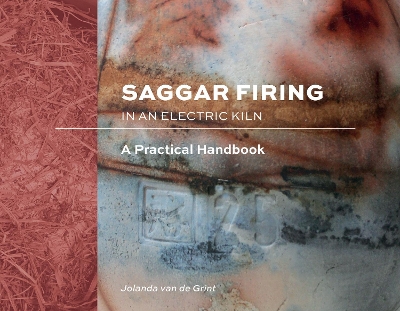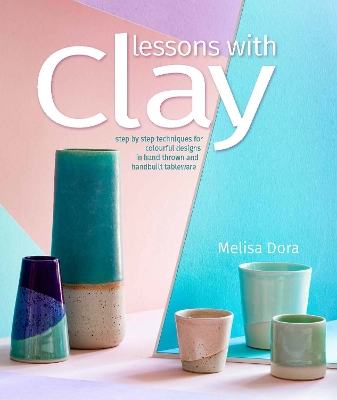Saggar Firing in an Electric Kiln
 portes grátis
portes grátis
Saggar Firing in an Electric Kiln
A Practical Handbook
van de Grint, Jolanda
Schiffer Publishing Ltd
11/2021
96
Dura
Inglês
9780764362323
15 a 20 dias
Descrição não disponível.
Introduction
What Is Saggar Firing?
Trying to understand the process - my 2016 jar project
About this book
Environmental and health issues
1. Making the saggar
2. Requirements your work must meet
2.1 Clay type and surface of the work
2.2 Using terra sigillata
2.3 Bisque firing temperatures
2.4 Glazing your work beforehand
3. Materials that give color to your work
3.1 Natural colorants
3.2 Metals
3.3 Oxides and carbonates
4. Attaching the coloring materials to your work
4.1 Natural colorants
4.2 Metals
4.3 Oxides and carbonates
Results | before and after saggar firing
5. Loading and firing the saggar
5.1 Combustible materials
5.2 Loading the saggar
5.3 The amount of oxygen: reduction and oxidation
5.4 Firing the saggar
5.5 Results and finishing
6. Experimenting: looking for new possibilities
6.1 Experimenting with different types of saggars
6.2 Experimenting with clay and terra sigillata
6.3 Experimenting with combustible materials
6.4 Experimenting with coloring materials
6.5 Experimenting with firing methods
6.6 Experimenting with the finish
7. Something went wrong
Gallery of work by workshop participants
Conclusion
Clays
Glossary
Media
Acknowledgments
What Is Saggar Firing?
Trying to understand the process - my 2016 jar project
About this book
Environmental and health issues
1. Making the saggar
2. Requirements your work must meet
2.1 Clay type and surface of the work
2.2 Using terra sigillata
2.3 Bisque firing temperatures
2.4 Glazing your work beforehand
3. Materials that give color to your work
3.1 Natural colorants
3.2 Metals
3.3 Oxides and carbonates
4. Attaching the coloring materials to your work
4.1 Natural colorants
4.2 Metals
4.3 Oxides and carbonates
Results | before and after saggar firing
5. Loading and firing the saggar
5.1 Combustible materials
5.2 Loading the saggar
5.3 The amount of oxygen: reduction and oxidation
5.4 Firing the saggar
5.5 Results and finishing
6. Experimenting: looking for new possibilities
6.1 Experimenting with different types of saggars
6.2 Experimenting with clay and terra sigillata
6.3 Experimenting with combustible materials
6.4 Experimenting with coloring materials
6.5 Experimenting with firing methods
6.6 Experimenting with the finish
7. Something went wrong
Gallery of work by workshop participants
Conclusion
Clays
Glossary
Media
Acknowledgments
Este título pertence ao(s) assunto(s) indicados(s). Para ver outros títulos clique no assunto desejado.
raku; alternative firing; kiln types; ceramic glazes; terra sigillata; firing; pit firing; ceramic
Introduction
What Is Saggar Firing?
Trying to understand the process - my 2016 jar project
About this book
Environmental and health issues
1. Making the saggar
2. Requirements your work must meet
2.1 Clay type and surface of the work
2.2 Using terra sigillata
2.3 Bisque firing temperatures
2.4 Glazing your work beforehand
3. Materials that give color to your work
3.1 Natural colorants
3.2 Metals
3.3 Oxides and carbonates
4. Attaching the coloring materials to your work
4.1 Natural colorants
4.2 Metals
4.3 Oxides and carbonates
Results | before and after saggar firing
5. Loading and firing the saggar
5.1 Combustible materials
5.2 Loading the saggar
5.3 The amount of oxygen: reduction and oxidation
5.4 Firing the saggar
5.5 Results and finishing
6. Experimenting: looking for new possibilities
6.1 Experimenting with different types of saggars
6.2 Experimenting with clay and terra sigillata
6.3 Experimenting with combustible materials
6.4 Experimenting with coloring materials
6.5 Experimenting with firing methods
6.6 Experimenting with the finish
7. Something went wrong
Gallery of work by workshop participants
Conclusion
Clays
Glossary
Media
Acknowledgments
What Is Saggar Firing?
Trying to understand the process - my 2016 jar project
About this book
Environmental and health issues
1. Making the saggar
2. Requirements your work must meet
2.1 Clay type and surface of the work
2.2 Using terra sigillata
2.3 Bisque firing temperatures
2.4 Glazing your work beforehand
3. Materials that give color to your work
3.1 Natural colorants
3.2 Metals
3.3 Oxides and carbonates
4. Attaching the coloring materials to your work
4.1 Natural colorants
4.2 Metals
4.3 Oxides and carbonates
Results | before and after saggar firing
5. Loading and firing the saggar
5.1 Combustible materials
5.2 Loading the saggar
5.3 The amount of oxygen: reduction and oxidation
5.4 Firing the saggar
5.5 Results and finishing
6. Experimenting: looking for new possibilities
6.1 Experimenting with different types of saggars
6.2 Experimenting with clay and terra sigillata
6.3 Experimenting with combustible materials
6.4 Experimenting with coloring materials
6.5 Experimenting with firing methods
6.6 Experimenting with the finish
7. Something went wrong
Gallery of work by workshop participants
Conclusion
Clays
Glossary
Media
Acknowledgments
Este título pertence ao(s) assunto(s) indicados(s). Para ver outros títulos clique no assunto desejado.







